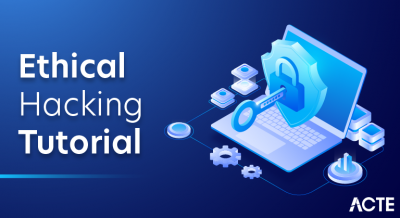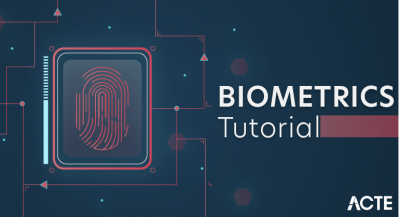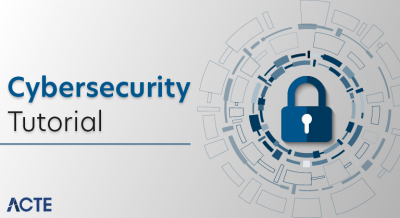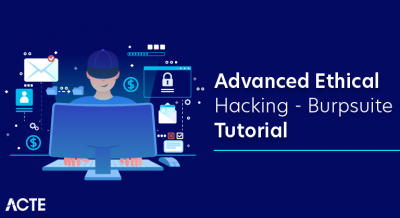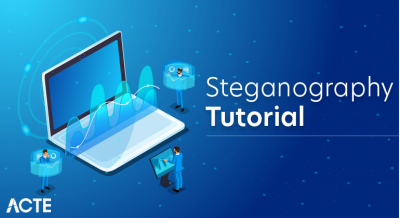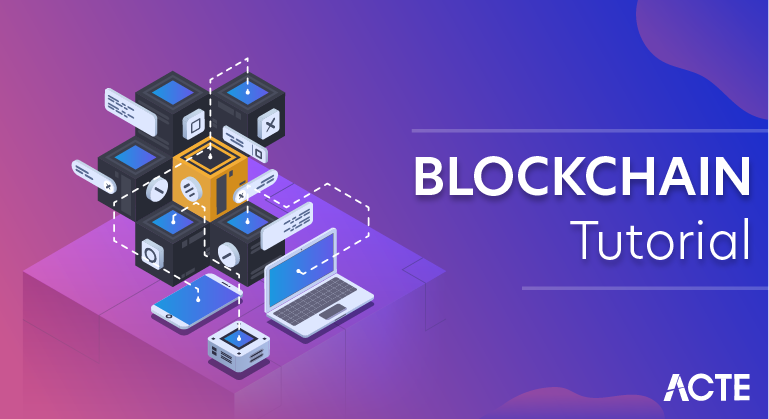
Blockchain Tutorial provides basic and advanced concepts of blockchain. Blockchain is a constantly growing ledger that keeps a permanent record of all the transactions that have taken place in a secure, chronological, and immutable way. It can be used for the secure transfer of money, property, contracts, etc. without requiring a third-party intermediary such as a bank or government. Blockchain is a software protocol, but it could not be run without the Internet (like SMTP is for email).What is Blockchain?
- BLOCKCHAIN can be defined as a chain of blocks that contains information. The technique is intended to timestamp digital documents so that it’s not possible to backdate them or temper them. The purpose of blockchain is to solve the double records problem without the need of a central server.
- The blockchain is used for the secure transfer of items like money, property, contracts, etc. without requiring a third-party intermediary like a bank or government. Once a data is recorded inside a blockchain, it is very difficult to change it.
- The blockchain is a software protocol (like SMTP is for email). However, Blockchains could not be run without the Internet. It is also called meta-technology as it affects other technologies. It consists of several pieces: a database, software application, some connected computers, etc.Sometimes the term is used for Bitcoin Blockchain or The Ethereum Blockchain and sometimes it’s other virtual currencies or digital tokens. However, most of them are talking about the distributed ledgers.
Let’s breakdown the definition,
- Ledger: It is a file that is constantly growing.
- Permanent: It means once the transaction goes inside a blockchain, you can put it up permanently in the ledger.
- Secure: Blockchain placed information in a secure way. It uses very advanced cryptography to make sure that the information is locked inside the blockchain.
- Chronological: Chronological means every transaction happens after the previous one.
- Immutable: It means as you build all the transactions onto the blockchain, this ledger can never be changed.
A blockchain is a chain of blocks which contain information. Each block records all of the recent transactions, and once completed goes into the blockchain as a permanent database. Each time a block gets completed, a new block is generated.
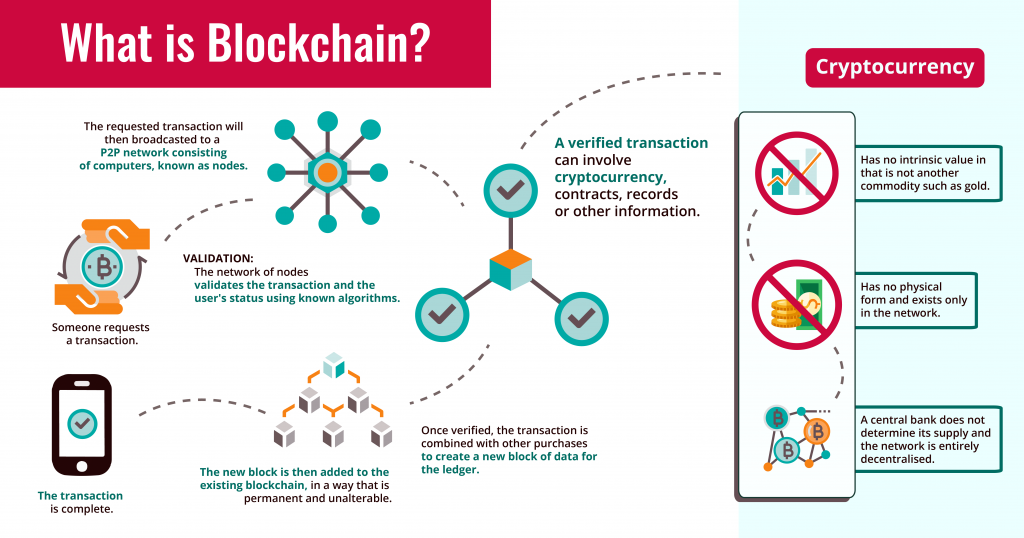
Who uses the blockchain?
Blockchain technology can be integrated into multiple areas. The primary use of blockchains is as a distributed ledger for cryptocurrencies. It shows great promise across a wide range of business applications like Banking, Finance, Government, Healthcare, Insurance, Media and Entertainment, Retail, etc.
Need of Blockchain
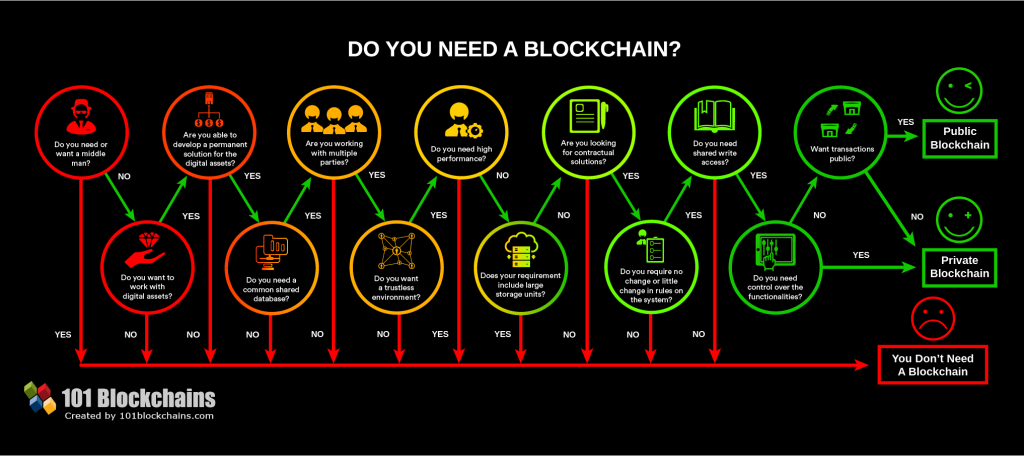
Blockchain technology has become popular because of the following.
- Time reduction: In the financial industry, blockchain can allow the quicker settlement of trades. It does not take a lengthy process for verification, settlement, and clearance. It is because of a single version of agreed-upon data available between all stakeholders.
- Unchangeable transactions: Blockchain register transactions in a chronological order which certifies the inalterability of all operations, means when a new block is added to the chain of ledgers, it cannot be removed or modified.
- Reliability: Blockchain certifies and verifies the identities of each interested party. This removes double records, reducing rates and accelerates transactions.
- Security: Blockchain uses very advanced cryptography to make sure that the information is locked inside the blockchain. It uses Distributed Ledger Technology where each party holds a copy of the original chain, so the system remains operative, even if a large number of other nodes fall.
- Collaboration: It allows each party to transact directly with each other without requiring a third-party intermediary.
- Decentralized: It is decentralized because there is no central authority supervising anything. There are standards rules on how every node exchanges the blockchain information. This method ensures that all transactions are validated, and all valid transactions are added one by one
Our Blockchain tutorial includes all the topics which help to learn Blockchain Technology. These are Introduction of Blockchain, History of Blockchain, What is Bitcoin, The Role of Bitcoin Miners, Hash Functions, Block Hashing, How Block Hashes Work in a Blockchain, How Distributed Blockchain Works, Cryptographic Hashing, Components of Bitcoin, Coinbase Transaction, Key Concepts in Bitcoin, Blockchain DAO, Blockchain Limitations, Blockchain Double Spending, What is Bitcoin Cash, Bitcoin Proof of Work, Merkle Tree, Who sets the bitcoin price, and many more.
Prerequisite
Before learning blockchain in depth, you must have the basic knowledge of scripting languages such as HTML, JavaScript, and CSS.
Audience
We have developed this blockchain tutorial for beginners and professionals both who want to build a career around blockchain or learn the precepts of blockchain in a seamless manner. There are given a lot of topics which will help you to learn blockchain technology easily.
Problems
We assure you that you will not find any problem with our Blockchain tutorial. But, if you find any mistake, you can post it in our comment section.
History of Blockchain
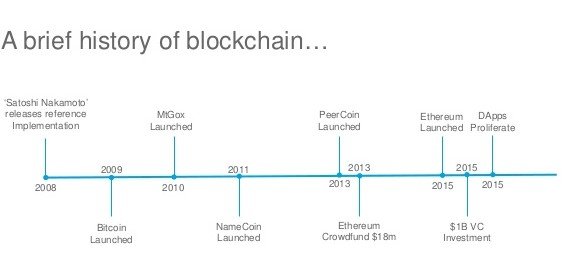
- The blockchain technology was described in 1991 by the research scientist Stuart Haber and W. Scott Stornetta. They wanted to introduce a computationally practical solution for time-stamping digital documents so that they could not be backdated or tampered. They develop a system using the concept of a cryptographically secured chain of blocks to store the time-stamped documents.
- In 1992, Merkle Trees were incorporated into the design, which makes blockchain more efficient by allowing several documents to be collected into one block. Merkle Trees are used to create a ‘secured chain of blocks.’ It stored a series of data records, and each data record connected to the one before it. The newest record in this chain contains the history of the entire chain. However, this technology went unused, and the patent lapsed in 2004.
- In 2004, computer scientist and cryptographic activist Hal Finney introduced a system called Reusable Proof Of Work(RPoW) as a prototype for digital cash. It was a significant early step in the history of cryptocurrencies. The RPoW system worked by receiving a non-exchangeable or a non-fungible Hashcash based proof of work token in return, creating an RSA-signed token that could be transferred from person to person.
What is Bitcoin?
- Satoshi Nakamoto introduced bitcoin in the year 2008. Bitcoin is a cryptocurrency(virtual currency), or a digital currency that uses rules of cryptography for regulation and generation of units of currency. A Bitcoin fell under the scope of cryptocurrency and became the first and most valuable among them. It is commonly called decentralized digital currency.A bitcoin is a type of digital assets which can be bought, sold, and transferred between the two parties securely over the internet. Bitcoin can be used to store values much like fine gold, silver, and some other type of investments. We can also use bitcoin to buy products and services as well as make payments and exchange values electronically.
- A bitcoin is different from other traditional currencies such as Dollar, Pound, and Euro, which can also be used to buy things and exchange values electronically. There are no physical coins for bitcoins or paper bills. When you send bitcoin to someone or use bitcoin to buy anything, you don’t need to use a bank, a credit card, or any other third-party. Instead, you can simply send bitcoin directly to another party over the internet securely and almost instantly.
What Blockchain is NOT!
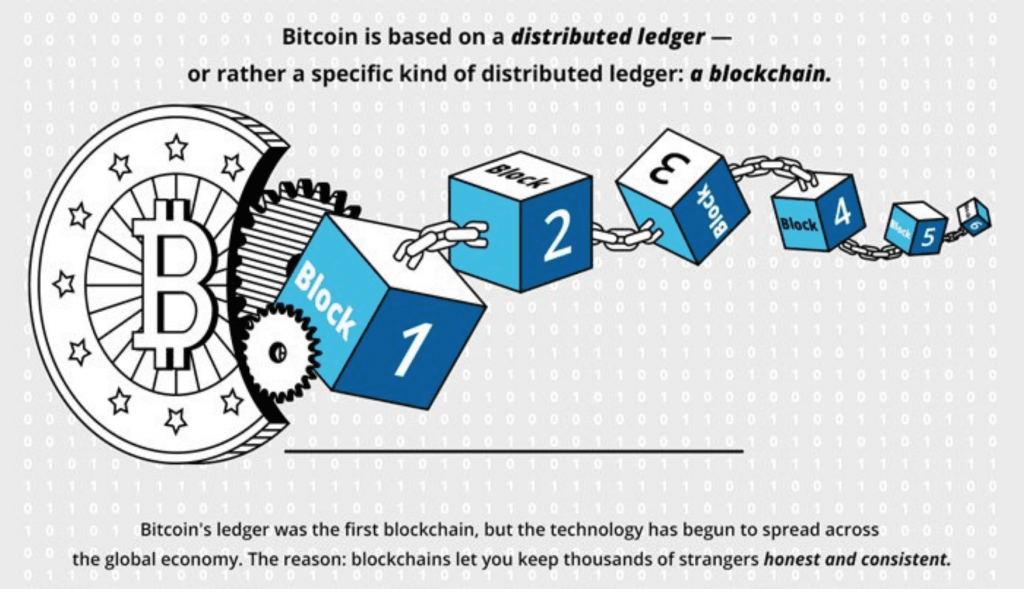
- Blockchain is not Bitcoin, but it is the technology behind Bitcoin
- Bitcoin is the digital token and blockchain is the ledger to keep track of who owns the digital tokens
- You can’t have Bitcoin without blockchain, but you can have blockchain without Bitcoin.
Blockchain Architecture
Let’s study the Blockchain architecture by understanding its various components:
What is a Block?
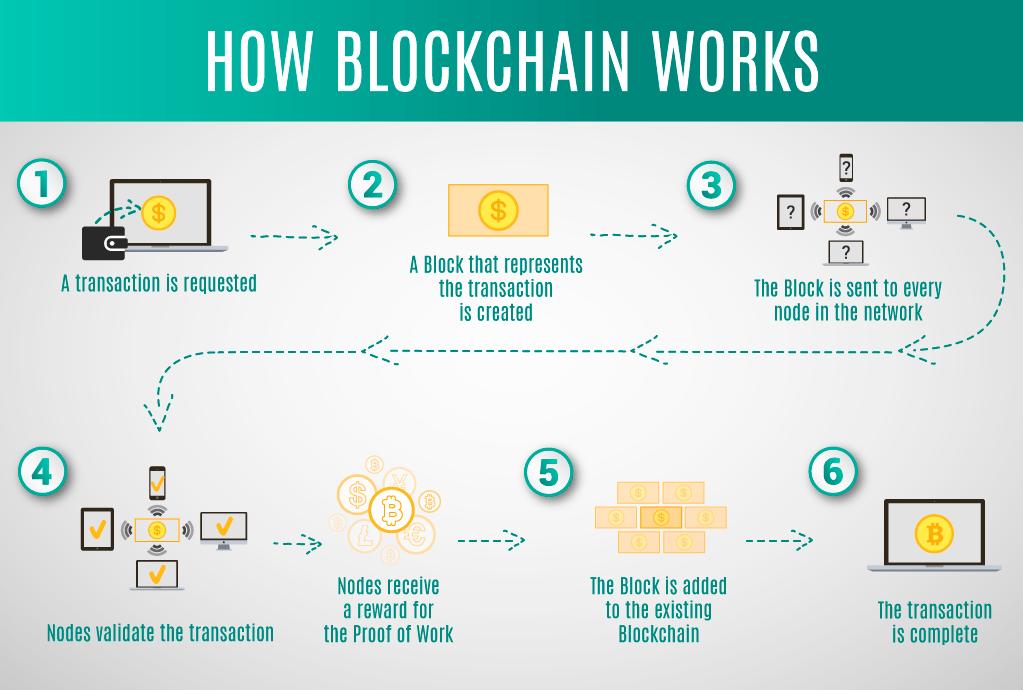
- A Blockchain is a chain of blocks which contain information. The data which is stored inside a block depends on the type of blockchain.For Example, A Bitcoin Block contains information about the Sender, Receiver, number of bitcoins to be transferred.
- The first block in the chain is called the Genesis block. Each new block in the chain is linked to the previous block.
Understanding SHA256 – Hash
A block also has a hash. A can be understood as a fingerprint which is unique to each block. It identifies a block and all of its contents, and it’s always unique, just like a fingerprint. So once a block is created, any change inside the block will cause the hash to change.
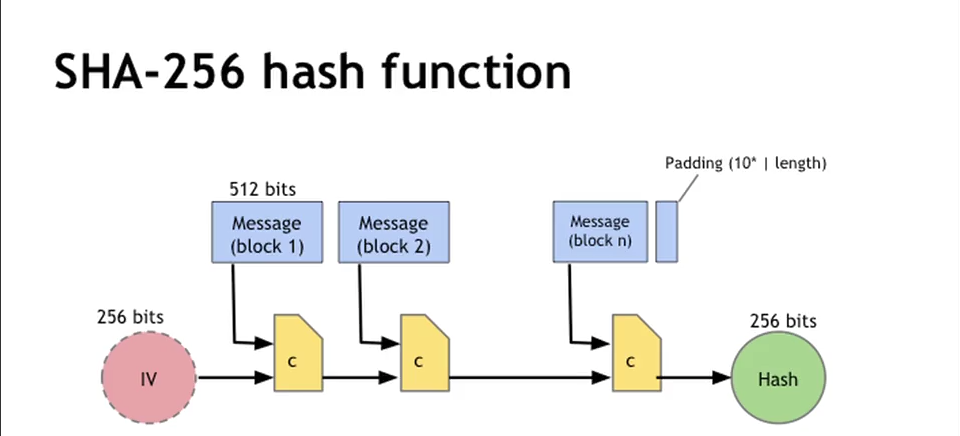
Therefore, the hash is very useful when you want to detect changes to intersections. If the fingerprint of a block changes, it does not remain the same block.
Each Block has
- Data
- Hash
- Hash of the previous block
- Consider the following example, where we have a chain of 3 blocks. The 1st block has no predecessor. Hence, it does not contain the previous block. Block 2 contains a hash of block 1. While block 3 contains Hash of block 2.Hence, all blocks are containing hashes of previous blocks. This is the technique that makes a blockchain so secure. Let’s see how it works –
- Assume an attacker is able to change the data present in the Block 2. Correspondingly, the Hash of the Block also changes. But, Block 3 still contains the old Hash of the Block 2. This makes Block 3, and all succeeding blocks invalid as they do not have the correct hash of the previous block.Therefore, changing a single block can quickly make all following blocks invalid.
Proof of Work
- Hashes are an excellent mechanism to prevent tampering but computers these days are high-speed and can calculate hundreds of thousands of hashes per second. In a matter of a few minutes, an attacker can tamper with a block, and then recalculate all the hashes of other blocks to make the blockchain valid again.
- To avoid the issue, blockchains use the concept of Proof-of-Work. It is a mechanism which slows down the creation of the new blocks.
- A proof-of-work is a computational problem that takes certain effort to solve. But the time required to verify the results of the computational problem is very less compared to the effort it takes to solve the computational problem itself.
- In the case of Bitcoin, it takes almost 10 minutes to calculate the required proof-of-work to add a new block to the chain. Considering our example, if a hacker would change data in Block 2, he would need to perform proof of work (which would take 10 minutes) and only then make changes in Block 3 and all the succeeding blocks.This kind of mechanism makes it quite tough to tamper with the blocks so even if you tamper with even a single block, you will need to recalculate the proof-of-work for all the following blocks. Thus, hashing and proof-of-work mechanisms make a blockchain secure.
Important Real-Life Use Cases of Blockchain
1.Dubai: The Smart City
In the year 2016, smart Dubai office introduced Blockchain strategy. Using this technology entrepreneurs and developers will be able to connect with investors and leading companies. The objective is to implement a blockchain base system which favors the development of various kinds of industries to make Dubai ‘the happiest city in the world.’
2. Incent Customer retention
Incent is CRaaS (Consumer retention as a service) based on the Blockchain technology. It is a loyalty program which is based on generating tokens for businesses affiliated with its related network. In this system, blockchain is exchanged instantaneously, and it can be stored in digital portfolios of a user’s phone or accessed through the browser.
3. Blockchain for Humanitarian Aid
In January 2017 the United Nations world food program started a project called humanitarian aid. The project was developed in rural areas of the Sindh region of Pakistan. By using the Blockchain technology, beneficiaries receive money, food and all types of transactions are registered on a blockchain to ensure security and transparency of this process.
Bitcoin cryptocurrency: Most Popular Application of Blockchain
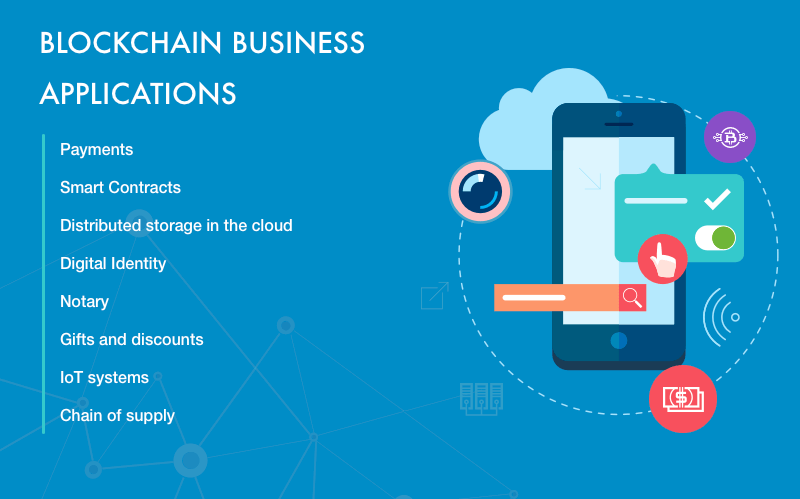
What is Cryptocurrency?
- A cryptocurrency is one medium of exchange like traditional currencies such as USD, but it is designed to exchange the digital information through a process made possible by certain principles of cryptography. A cryptocurrency is a digital currency and is classified as a subset of alternative currencies and virtual currencies.
- Cryptocurrency is a bearer instrument based on digital cryptography. In this kind of cryptocurrency, the holder of the currency has ownership. No other record kept as to the identity of the owner. In the year 1998, Wei Dai published “B-Money,” an anonymous, distributed electronic cash system.
How Bitcoin Works?
- When you send an email to another person, you just type an email address and can communicate directly to that person. It is the same thing when you send an instant message. This type of communication between two parties is commonly known as Peer-to-Peer communication.
- Whenever you want to transfer money to someone over the internet, you need to use a service of third-party such as banks, a credit card, a PayPal, or some other type of money transfer services. The reason for using third-party is to ensure that you are transferring that money. In other words, you need to be able to verify that both parties have done what they need to do in real exchange.
- For example, Suppose you click on a photo that you want to send to another person, so you can simply attach that photo to an email, type the receiver email address and send it. The other person will receive the photo, and you think it would end, but it is not. Now, we have two copies of the photo, one is a simple email, and another is an original file which is still on my computer. Here, we send the copy of the file of the photo, not the original file. This issue is commonly known as the double-spend problem.
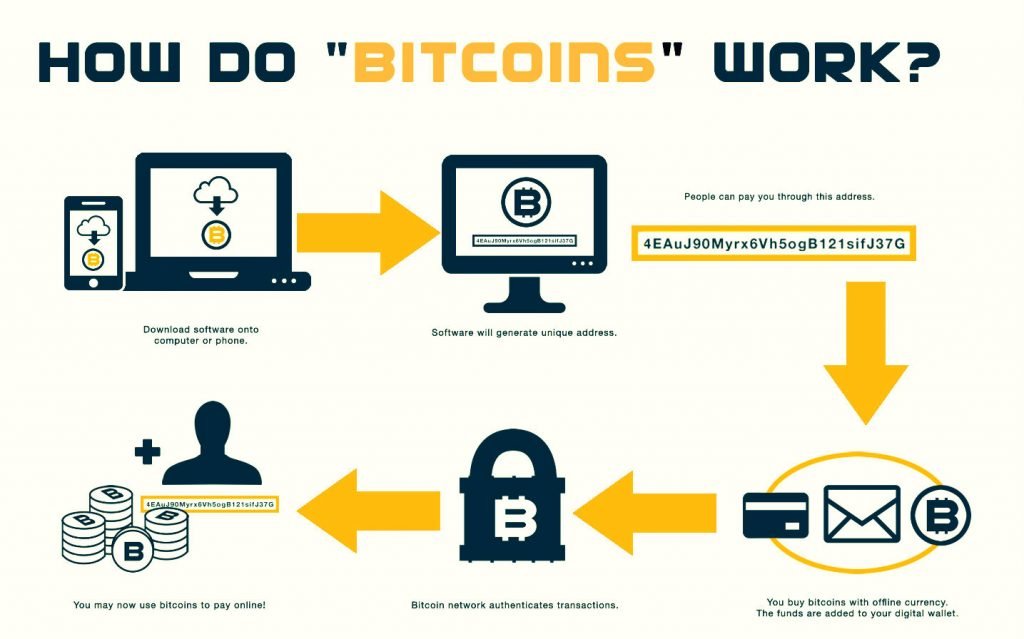
The double-spend problem provides a challenge to determine whether a transaction is real or not. How you can send bitcoin to someone over the internet without needing a bank or some other institution to certify the transfer took place. The answer arises in a global network of thousands of computers called a Bitcoin Network and a special type of decentralized laser technology called blockchain.
In Bitcoin, all the information related to the transaction is captured securely by using maths, protected cryptographically, and the data is stored and verified across the entire network of computers. In other words, instead of having a centralized database of the third-party such as banks to certify the transaction took place. Bitcoin uses blockchain technology across a decentralized network of computers to securely verify, confirm and record each transaction. Since data is stored in a decentralized manner across a wide network, there is no single point of failure. This makes blockchain more secure and less prone to fraud, tampering or general system failure than keeping them in a single centralized location.
Blockchain Version
The brief description of the evolution of blockchain technology and its versioning from 1.0 to 3.0 are explained below.

Blockchain 1.0: Currency
The idea of creating money through solving computational puzzles was first introduced in 2005 by Hal Finney, who created the first concept for cryptocurrencies (The implementation of distributed ledger technology). This ledger allows financial transactions based on blockchain technology or DLT to be executed with Bitcoin. Bitcoin is the most prominent example in this segment. It is being used as cash for the Internet and seen as the enabler of an Internet of Money.
Blockchain 2.0: Smart Contracts
- The main issues that came with Bitcoin are wasteful mining and lack of network scalability. To overcome these issues, this version extends the concept of Bitcoin beyond currency. The new key concepts are Smart Contracts. It is a small computer program that “lives” in the blockchain. They are free computer programs which execute automatically and checked conditions which are defined earlier like facilitation, verification or enforcement. The big advantage of this technology that blockchain offers, making it impossible to tamper or hack Smart Contracts. A most prominent example is the Ethereum Blockchain, which provides a platform where the developer community can build distributed applications for the Blockchain network.
- Quickly, the blockchain 2.0 version is successfully processing a high number of daily transactions on a public network, where millions were raised through ICO (Initial Coin Offerings), and the market cap increased rapidly.
Blockchain 3.0: DApps
DApps is also known as a decentralized application. It uses decentralized storage and communication. Its backend code is running on a decentralized peer-to-peer network. A DApp can have frontend code hosted on decentralized storages such as Ethereum Swarm and user interfaces written in any language that can make a call to its backend like a traditional Apps.
Blockchain Use Cases
Blockchain Technology is used widely in the different sectors as given in the following table.
Markets :
- Billing, monitoring and Data Transfer
- Quota management in the Supply Chain Network
Government Sector :
- Transnational personalized governance services
- Transnational personalized governance services
- Digitization of documents/ contracts and proof of ownership for transfers
- Registry & Identify
- Tax receipts Notary service and document registry
- IP registration and exchange
- Tele-attorney service
Conclusion:
Bitcoin is the first successful implementation of blockchain. Today, the world has found applications of blockchain technology in several industries, where the trust without the involvement of a centralized authority is desired. So welcome to the world of Blockchain.Hope you have found all the details that you were looking for, in this article.


